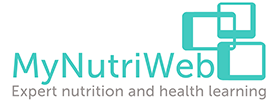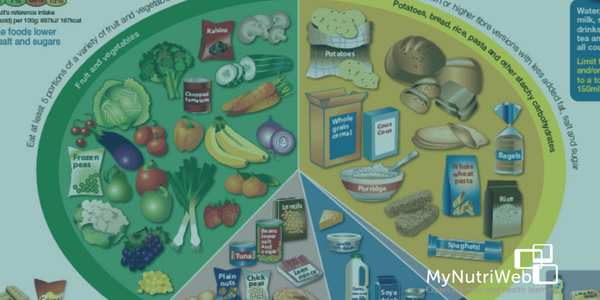A recent survey and research project, funded by an educational grant from Danone, has explored The Eatwell Guide communications, with some stark findings which raise some challenging asks for government.
Research shows for every million people in the UK, only 78 meet all the recommendations set out in the Eatwell Guide. It’s a staggering statistic. But recent work to understand the views of health professionals shows it’s unsurprising given the current resources and campaigns to support the government-created national food model. With the health of the public and planet under serious threat, health professionals are clear about the need to ask for a government created and funded comprehensive joined-up communications strategy and expanded resource hub to support them in their work.
In September 2022, MyNutriWeb hosted The Eatwell Guide: Time for a Shake Up? a roundtable webinar with presentations covering current adherence to the guide, materials available to support the recommendations, a look at food-based dietary guidelines in other countries and UK health professional views on the national food model. A discussion then took place with input from a variety of experts and questions from attendees on what needs to be done to ensure The Eatwell Guide is fit for purpose and brings about the much-needed dietary change required to improve the health of the people and the planet.
The background…
The Eatwell Guide translates UK dietary reference values and food-based recommendations into a visual model. The current version was launched in March 2016, updating and replacing its predecessor, The Eatwell Plate. It consists of five food groups in the proportions they should be consumed to achieve a healthy balanced diet, together with additional guidance in areas such as hydration, energy requirements and front of pack nutrition labelling. Whilst developed with the health of the nation in mind, the Carbon Trust also conducted a post hoc sustainability assessment on The Eatwell Guide and concluded it showed a much lower environmental impact than the current UK diet.
The problem…
Current adherence to the Eatwell Guide is extremely low. A study published in the BMJ Open in 2020 confirmed just 0.078% of the UK population (aged five and above, based on data from wave 5-9 of the National Diet and Nutrition Survey) met all nine of the recommendations, which focus on total fat, saturated fat, salt, sugar, fibre, oil-rich fish, non-oil-rich fish, fruit and veg, and red and processed meat. This means just 780 people in a million meet all the recommendations. With a projected UK population of around 64 million people over the age of five in 2022, that’s less than 50,000 people meeting all the Eatwell Guide recommendations in the whole of the UK!
But that’s not all. Only 30% of people in the study, met five or more of the recommendations. The majority – 44% – achieved just three or four, while a quarter managed no more than two. Low adherence was found to have a significant negative impact on both health and the climate. Those who met two or fewer of the recommendations had a 7% increased risk of mortality and a 30% increase in dietary greenhouse gas emissions compared with those who met five or more. The researchers concluded:
“A fast-tracked nationwide shift towards adherence to The Eatwell Guide will provide an essential step towards sustainable and healthy diets in the UK.”
Why the low adherence?
Amy Culliford, a freelance Public Health Nutrition Consultant who specialises in sustainable diets and food systems working with Dr Jane Bradbury at Edge Hill University, says their research suggests it’s unsurprising that adherence is low. Amy and Jane have reviewed the current literature on communicating dietary guidelines and looked at other countries’ communication strategies. The conclusion? Amy says:
“The Eatwell Guide communications need to be improved to bring them in line with international best practice with various lessons to be learnt from countries such as the USA, Canada, Australia, Ireland and Brazil.
Messaging needs to be tailored to specific groups, motivating factors and barriers to dietary behaviour change should be addressed and more consistent, accessible educational resources and practical tools must be provided. Collaboration across the board, including government, the food industry and healthcare – is also essential”
This was a general theme that came out of the MyNutriWeb panel discussion. This research will be submitted for publication this year.
The nutrition expert view
The lack of practical resources and disjointed communication strategies to support The Eatwell Guide are issues that certainly resonate with health professionals including Dietitians and Nutritionists (see Table 1). A recent survey of the British Dietetic Association and MyNutriWeb community of health professionals collated the views of almost 2,400 health professionals to gain insight into how The Eatwell Guide is currently used and to identify what needs to be done to improve communication. Key findings included:
- The Eatwell Guide provides a good overview – health professionals like the pictorial approach, the simplicity, colour coding and that it clearly demonstrates the five food groups
- But there are some major issues – health professionals say there are a lack of resources to help translate The Eatwell Guide recommendations into tailored and personalised information for a diverse population with different needs, whether that’s taking cultural considerations into account
- Providing information for those on a budget or working with people with different dietary needs. Table 2 shows the resources health professionals would like to help them better communicate The Eatwell Guide
- The lack of portion size guidance is a major drawback – health professionals are currently using a variety of other resources such as materials from the British Nutrition Foundation, the British Dietetic Association and Love Food Hate Waste, resulting in a lack of consistency and often confusion
- Resources need to get to the masses – The Eatwell Guide needs to modernise and use popular technology, including apps, videos and social media

Time for a shake up
It’s clear that whilst government has provided The Eatwell Guide to encourage dietary change, and has supported this with various communication activities and development of practical apps via the ‘Better Health: Healthier Families’ (nee Change4Life), it is clear that more joined up support and funding is needed to effectively translate the recommendations into dietary practice. This is made clear by the inconsistent usage and low adherence . In short, it is failing both public health and the crucial need to meet global climate change targets.
The Eatwell Guide is a popular “starter” resource – a theme that was evident from the roundtable discussion and has huge potential to bring about dietary change that benefits human health and the planet so there is an urgent need for it to be supported with a joined up effective communications strategy that provides clear and consistent advice and becomes the go-to source for trustworthy, accessible and credible advice on healthy eating. It’s clear a national shake-up is needed and health professionals believe government could be doing far more to support this (see Table 3).
With such a large response, and engagement with the survey and subsequent round table event, health professionals are clearly calling for action from government. While there was agreement that The Eatwell Guide provides a good overview, with health professionals liking the pictorial approach, the simplicity, colour coding and the clear demonstration of the five food groups, there were some major issues to address – with a seven-point action plan identified:
- Re-assess the current communications and upscale the marketing and communications strategy using both traditional media such as print, TV and radio, and digital media, including social media, websites, videos and more apps
- Create a central hub of diverse Eatwell Guide resources that cover areas such as shopping and cooking tips, food swaps, meal planning, motivational advice, budget-friendly ideas, recipes and quizzes
- Develop portion size guidance and number of servings of each food group as a priority
- Translate The Eatwell Guide into a range of different languages to support the multicultural nature of the UK, and provide resources that are tailored for different cultural groups and eating habits
- Translate The Eatwell Guide into toolkits fit for use by all organisations providing food
- Establish cross-government use of The Eatwell Guide in all departments, agencies and public bodies that include a food element including OHID, Defra, DfE, DCMS, DLUHC, DWP and DHSC to ensure healthy eating messages are consistent
- Use The Eatwell Guide as a starting point in all health and food related policy development and strategy
The BDA is supportive of the messaging of this work led by dietitians and researchers.
BDA CEO Liz Stockley – “It’s great to see dietitians and partners taking the lead in collating views of the community and taking the lead on a series of recommendations. We are pleased to support this via the sourcing of member views and sharing it in Dietetics Today to amplify the message.”
Tanya Haffner, Registered Dietitian and CEO of MyNutriWeb “Whilst the Government has provided The Eatwell Guide and some supporting campaigns to encourage dietary change, there is just far too little support and funding for communicating the messages effectively and consistently. The impact of public health nutrition in the UK is low, failing both public health and the crucial need to meet global climate change targets. We need vision from the top and an injection of investment into targeted inspirational marketing of eating well along with supportive policy change. And we need this yesterday”.
The project survey and research were supported by an educational grant from Danone.
References
MyNutriweb webinar – Eatwell Guide – Time for a Shake Up (2022)
Principal projection – UK population in age groups (2022)
Eatwell Model Guide Report (2016)









